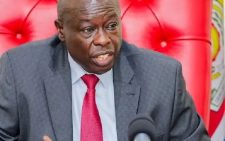Kenya must raise its game on regional trade ties

Kenya’s ambition to enhance trade relationships across East Africa through shared infrastructure has encountered numerous setbacks, calling for a more assertive and strategic diplomatic approach.
As a self-declared economic powerhouse in the region, Kenya faces stiff competition from countries like Ethiopia, which are making bold moves to secure their foothold in regional markets.
That is why Kenya must not only reevaluate its economic diplomacy but also intensify its presence and incentives to keep neighbours committed to shared projects and tackling economic challenges with collaborative, region-focused solutions.
This need for strategic collaboration is exemplified by Ethiopia’s recent $738 million loan to South Sudan for a 220km road project connecting the two countries.
The loan agreement, which includes a four-year grace period and a 10-year repayment schedule, allows Juba to repay with both cash and crude oil.
Ethiopia’s commitment to this road construction deal, managed by its contractors, is more than a financial investment; it demonstrates proactive regional integration that Kenya would do well to emulate.
Ethiopia’s approach shows that, despite being landlocked, it can leverage strategic partnerships to achieve regional influence.
Its 550km fuel pipeline with Djibouti is another example, granting it access to an alternative route to the sea that bypasses Kenya’s Lamu Port.
This pipeline allows Ethiopia to bypass Kenya and positions Djibouti as a competitor to the Lamu and Mombasa ports. Ethiopia’s efforts to diversify its trade options signal a proactive diplomacy that doesn’t rely solely on proximity but seeks practical, mutually beneficial partnerships.
While a road from the Berbera Port through Somaliland to Ethiopia opened up the latter to greater opportunities, it gave other ports competition.
For Kenya, the stalled development of the Lamu Port-South Sudan-Ethiopia Transport (Lapsset) corridor offers a lesson in how protracted timelines and inconsistent commitments can jeopardise its position as a regional connector.
Originally designed to facilitate access to the sea for Ethiopia, Uganda, and South Sudan, Lapsset promised to become a major trade route and enhance East African economic integration. However, slow progress and the absence of consistent incentives have delayed this mega project.
Uganda, for example, decided against a pipeline through Lamu and opted instead for a route through Tanzania to the port of Tanga, citing cost factors and logistical advantages.
Kenya can no longer depend solely on its advantageous geographical position to maintain its influence. Instead, the country must develop more enticing value propositions to retain its relevance in the region.
This means providing tangible benefits like streamlined trade policies, affordable access, and competitive service levels at its ports and transport corridors. Such offerings will help counterbalance the lure of alternative deals.
Ethiopia’s model of using infrastructure investments as diplomatic leverage is a powerful one. It shows that proactive and practical diplomacy can yield long-term growth and Kenya should take this cue to craft more innovative, high-value partnerships that can make it indispensable to its neighbours.
Kenya should consider adopting innovative financing strategies that align with the economic needs of its neighbours, fostering shared benefits and enhancing regional growth. By exploring joint ventures and co-financing models for infrastructure projects, Kenya could distribute costs more effectively while creating a sense of shared ownership and strengthening ties with its neighbours.
— The writer is People Daily’s Business Editor










